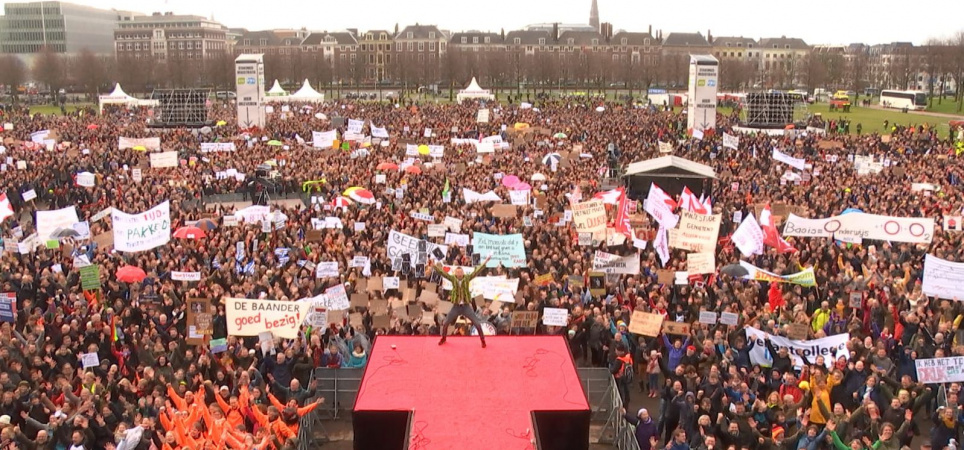'Coalition agreement indicates that campaigning pays off'
Taking action pays off. That's according to AOb-chairman Tamar van Gelder the most important lesson from the coalition agreement, which was presented today. “It contains a number of issues that we have been fighting for for years. Such as closing the pay gap between primary and secondary education.”

The pay gap, the difference in salary between primary school teachers and their colleagues in secondary education, is being closed. That's in the coalition agreement presented today. Secondary special education, which currently still falls under primary education (PO), will also be transferred to secondary education (VO). And a first step seems to be being taken towards stable funding for scientific education.
“These are points we have been fighting for for years,” says AOb-chairman Tamar van Gelder. “If the coalition agreement shows one thing, it is that campaigning pays off. That is why all those teachers, supporters and school leaders have come to demonstrations time and again, in their region and in The Hague. We've all stood in the mud for that on the Malieveld. It has cost a lot of blood, sweat and tears, but it is now really black and white.”
According to informateur Koolmees, the teacher shortage cannot be solved within one cabinet term. I find that a shocking lack of ambition
The coalition agreement also contains a number of points that everyone in education can support. For example, investments must go directly to the classroom as much as possible, via the system with which the work pressure resources in primary education are also distributed. And the authority of school leaders and teachers is strengthened.
Spring note
Many other matters still need to be worked out, warned informer Koolmees when the agreement was presented. According to him, the Spring Memorandum is the place where the various plans, together with the House of Representatives, are concretely fleshed out. Also in the field of secondary education, senior secondary vocational education and higher education, there is still a great deal unclear about how much money is available and now for exactly which measures.
Teacher shortage
According to Koolmees, the problem of the teacher shortage cannot be solved within one cabinet term, because there are simply not enough teachers. “I think that's a shocking lack of ambition,” says Van Gelder. “The word 'teacher shortage' is mentioned once in the coalition agreement, and then only with the comment that the current teachers should work more hours. As if that would be possible, with the current workload.
According to Van Gelder, more needs to be done to tackle this shortage. "We have to convince many more people to take up the most beautiful subject in the world - or to take it up again, if they have left education. And we have to make sure that we keep the current teachers for our profession, also in secondary education and high school."
CLA
The agreement states that there will be one joint collective labor agreement for primary and secondary education, which also includes administrators. “It was high time that drivers were also covered by the collective labor agreement,” says Van Gelder. “We will also look at how this subject will play out in practice. I invite the new ministers to work out this coalition agreement with us.”
Negotiations
From now on, Van Gelder would like to sit down with the minister directly during these consultations and negotiations. “Negotiating wages with educational umbrella organizations such as the PO Council and the VO Council is passé as far as I'm concerned. Because those umbrella organizations are in turn dependent on how much money they receive from the minister. We also want to prevent a new pay gap between the two sectors. Then we better negotiate directly with that minister. And I expect that the new ministers will really go out of their way for education.”
Number
In campaigning and negotiating, the power of numbers applies: the more members, the more results the unions can achieve. “That is once again apparent from this coalition agreement,” says Van Gelder. “There are many good things in it, but there are also many things that are not in it – or not enough. We must all work together to achieve this, in the interest of our education and of our students. I say from the bottom of my heart: become a member. And if you're already a member, make a colleague a member. Together we are strong, it shows again.”


